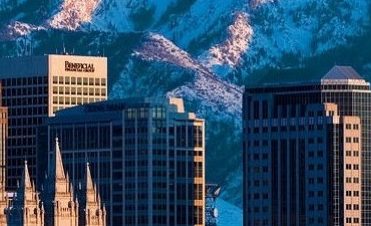Blog Post
Insight: Imagine Utah’s Next 50 Years
By: Natalie Gochnour
Originally published in the Deseret News
In 1966, Utah reached the 1 million population milestone. Community leaders celebrated the achievement by greeting Utah’s newest resident — dubbed “Mr. Million” – with a 60-piece band as he stepped off the airplane. Since then Utah has added another 2 million people, and projections released last week by the Kem C. Gardner Policy Institute suggest another 2.5 million new residents over the next 50 years. It begs the question, what does the future portend for the Beehive State?
There are some things we know with a great deal of certainty. Baby boomers will continue to age, and Utah’s population, like that of the nation, will continue to become older. The median age is projected to increase by about nine years.
Even more revealing is the projected number of centenarians (people at least 100 years old), which is expected to increase from about 330 Utahns today to approximately 6,840 by 2065. Seniors will become a much larger and vital part of Utah.
There are other things we don’t know with certainty, but are open for speculation. This is where our purposeful actions as sentient beings take form. It’s also where the fun begins. Let’s imagine a few things.
Imagine a new ski resort in Salt Lake Valley’s Oquirrh Mountains. Rising just west of Magna from a base of 6,200 feet to 9,350 feet, this new resort would have a similar vertical drop to Park City with unbeatable access. It would be the closest ski resort to an international airport in the world. Aspen is 222 miles from Denver’s airport; an Oquirrh Mountain resort would be 18 miles from ours.
Imagine a National Football League franchise in West Valley City. NFL teams reside in Green Bay, Buffalo, New Orleans, Jacksonville and Indianapolis metro areas, each with under 2 million people. West Valley City is centrally located in one of the nation’s most rapidly growing metro areas and could be the place for a future expansion team.
Imagine a major airport in Utah County servicing the greater Salt Lake metropolitan area. Utah County is the state’s fastest growing urban county and has, by far, the most remaining developable land. Provo Municipal Airport already offers commercial air service via Allegiant Air to Los Angeles, Mesa, Oakland and San Diego. More airlines and destinations could be on their way.
Imagine Salt Lake City hosting another Olympic Winter Games. The International Olympic Committee will select 10 more host cities for the Winter Olympics before 2065. Salt Lake City hosted superb games in 2002 and our Olympic facilities remain world class. Community leaders have expressed their intention to pursue the rings again. It’s just a matter of time before Utah will once again “light the fire within.”
Imagine trains running up and down Parleys Canyon connecting the airport, downtown, and Park City together like a string of pearls. Even more ambitious, envision rail service extending to Heber Valley.
Imagine thousands of drones dotting the skyline delivering packages to your doorstep within two hours of placing the order. State law and city ordinances will need to keep pace, but drones offer the promise of less traffic congestion, less pollution and efficient, low-cost service.
Whatever stage of life you’re in, enjoy where you’re at and take steps today to make the most of the coming years.
If you think these ideas are crazy, consider what Utah looked like when Mr. Million stepped off that Western Airlines jet 50 years ago. There was no Utah Jazz, Real Salt Lake, 2002 Olympic Winter Games and Pac-12. Utah was a true “flyover” state with very little sports presence.
There was no international airport, not to mention a Delta hub and nonstop service to major European cities like Amsterdam, London and Paris. There was no Park City-Vail … the largest ski resort in the United States. There was no Eccles Theater.
They say the best way to predict the future is to invent it. The future certainly holds many challenges — air quality, traffic congestion and an aging population, to name a few. But from what I’ve seen in the past, I imagine Utah inventing a great future.
Natalie Gochnour is the associate dean of the David Eccles School of Business and director of the Kem C. Gardner Policy Institute.






